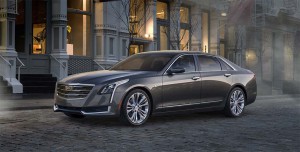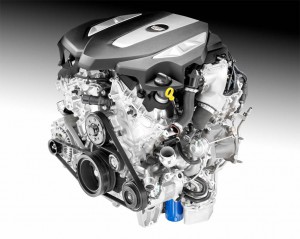Cadillac will follow this week’s debut of the CT6, with news that its new flagship sedan will also get a plug-in hybrid drivetrain.
But the PHEV system set to officially debut at the Shanghai Motor Show later this month won’t be the anemic system found in Caddy’s compact current plug-in model, the compact ELR. It will deliver similar performance to the new twin-turbo V-6 being offered in the CT6. And that system will eventually be used in a variety of other Cadillac models, the brand’s global boss told TheDetroitBureau.com.
“We’re going to roll out plug-in hybrid technology across the spectrum of Cadillac cars,” promised Cadillac President Johan de Nysschen. As a result, “we won’t need a car like the ELR.”
Though Cadillac officials were reluctant to go into extensive detail about the CT6 plug-in hybrid, hoping to maintain some secrets to reveal at the Shanghai show, TheDetroitBureau.com was able to pry loose some of the more critical information.
The new PHEV will, for one thing, generate the sort of launch performance of the 3.0-liter twin-turbo V-6 which makes 400 horsepower and 400 pound-feet of torque. The good news is that electric motors generate most of their torque the moment they’re switched on.
(For the full story on the new Cadillac CT6, Click Here.)
Caddy officials declined, however, to provide specific details about the new plug-in’s gas engine and electric motor. But they hinted that the new model will use a lithium-ferrous-oxide battery pack somewhat larger than that found in the original Chevrolet Volt. That should mean something in the range of 20 kilowatt-hours.
That’s critical if Cadillac hopes to take full advantage of the potential benefits available for battery-based vehicles sold in China – which is expected to account for a sizable share of global CT6 sales. To deal with the country’s endemic smog problems, regulators are trying to encourage a switch to battery-cars, but they must deliver at least 50 kilometers of range – about 32 miles – per charge.
Among other things, those who buy a qualifying vehicle get to sidestep rules now in place in Beijing, Shanghai and a number of other major cities meant to limit the number of new vehicles that can be registered each month.
(Click Here for the full story on the new Lincoln Continental.)
Despite the performance of the new plug-in, the Cadillac CT6 PHEV will likely get somewhere in the range of 45 mpg, according to several sources, though ratings will vary by country.
The new plug-in version of the CT6 will initially be launched in China, but de Nysschen confirmed plans to bring the PHEV model to the U.S., as well, if for no other reason than to increase its economies of scale. Exactly what share of total CT6 production it is ultimately expected to account for he was not able to say.
But de Nysschen did stress his goal of using the battery-based system on virtually every other model in the Caddy line-up. The maker plans to introduce eight new models by decade’s end – ranging from an even bigger sedan likely to be dubbed the CT8 or CT9, as well as an entry-lux model and several new utility vehicles.
As for the current ELR plug-in, the slow-selling model will play out its planned lifecycle but apparently won’t be replaced. Based on the original Chevy Volt’s drivetrain, it offers only slightly better performance and a bit more than 30 miles range.
(Click Here to see what else is coming to this year’s NY Auto Show.)
Cadillac isn’t the only luxury maker that sees opportunities to plug into battery power. BMW last month launched its new X5 xDrive40e plug-in, joining such plug-ins as the futuristic i8. Mercedes-Benz also announced last month plans to introduce 10 new plug-ins by 2017.
Luxury makers are particularly interested in the technology, at least in part, to help deal with increasingly strict mileage and emissions standards. They also see PHEVs as a way to sidestep new rules being proposed for a number of cities worldwide that might limit access for gas-powered vehicles.
But they have come to see the best opportunity to market plug-ins is to emphasize performance as much as fuel-economy.


